







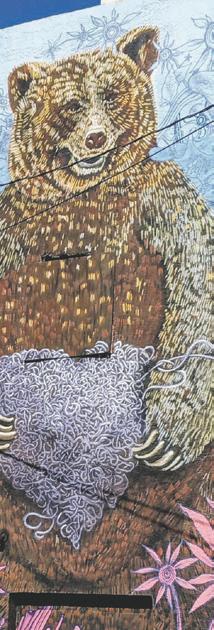
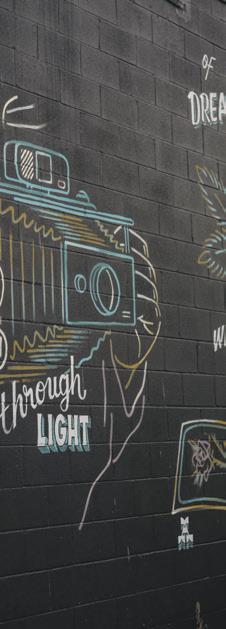



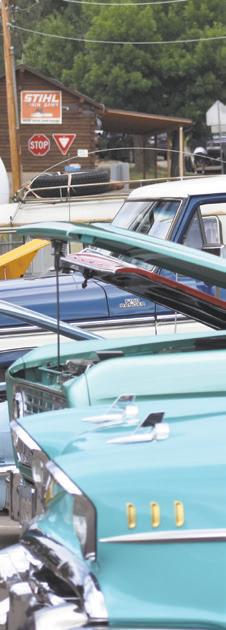
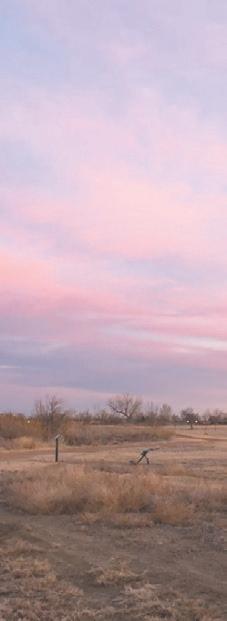
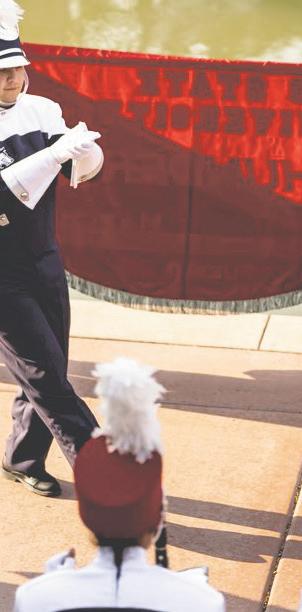

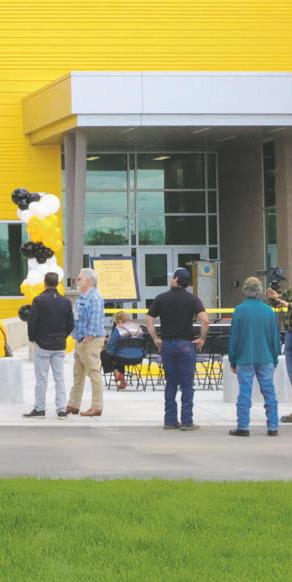
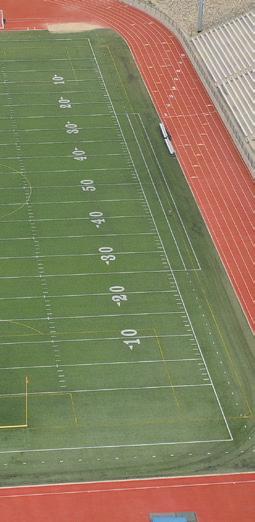

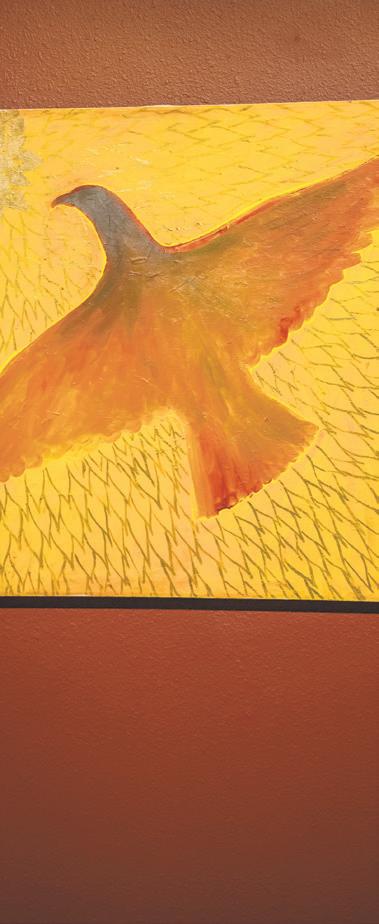


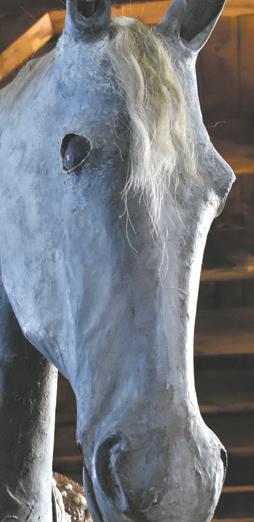
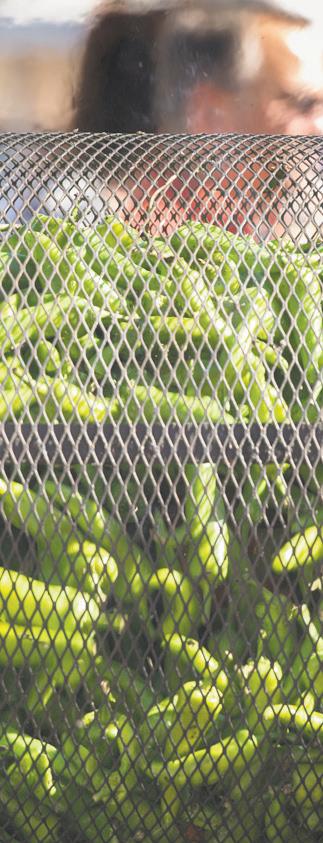

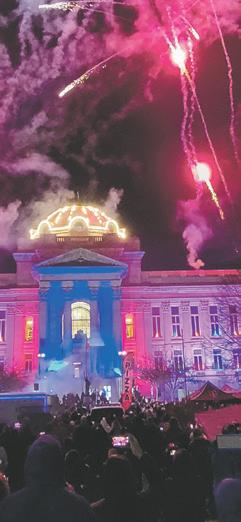




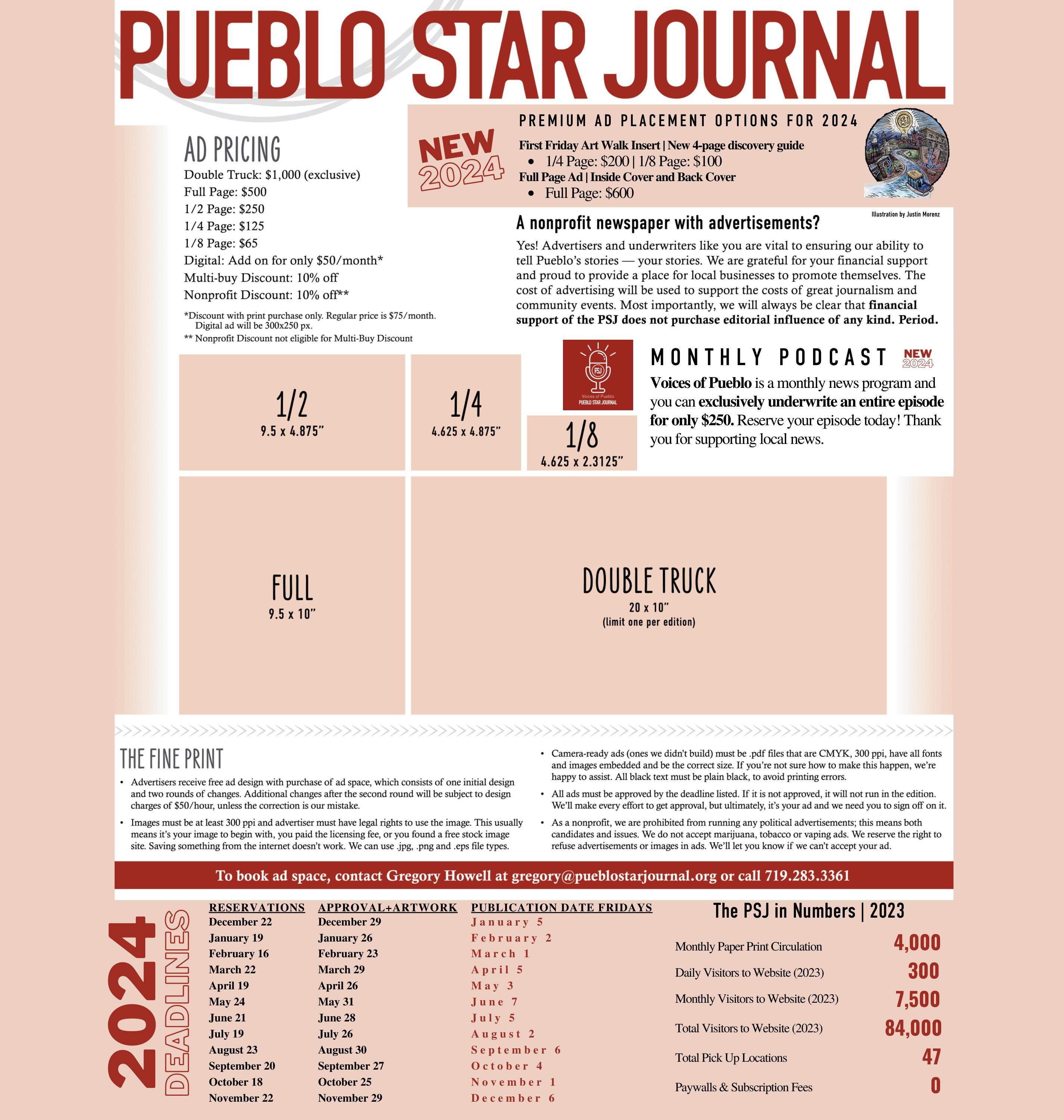

































The STAR shines bright, Brings Pueblo great light, As the news we learn Brings knowledge to discern.
Oh, I am glad to live here. There’s nothing to fear.
We all care for each other
As friends, neighbors, sisters and brothers.
The JOURNAL shares the news, What in the area to choose, How to listen, where to go
For good faith, food that Pueblo bestows.
Pop, sports and music inspires our miles
As we encourage, give help and smiles.
The STAR JOURNAL is a great voice. Reading its news, we rejoice.
Local
Board of Directors: Gregory Howell, Kennedy Pugh, Chantal Woodyard, Leslie Nazario
Advisory Board: Nicki Hart, Susan Wolf, Caroline Trani, Jayson Peters
Managing Editor: Rory Harbert Staff Reporter: Nico Grayson
Contributors: Cat O’Grady, Kristin Skye Hoffmann, Rachel Kutskill, Gary Markstein, Jocelyn Martinez, Bree Anne Pappan, Amy Gillentine Sweet.
Special thanks to: Al “Pama” Maisel, Blo Back Gallery, Colorado Housing & Financing Authority, Colorado Newsline, Creative Consortium of Pueblo, CSU Extension Office, CSU Pueblo, Fountain Creek Watershed District, Karmic Konnection, Mt. Carmel Veterans Service Center, Nature & Wildlife Discovery Center, Photography by Lyss, Pueblo City-County Library District, Pueblo County Historical Society, Pueblo County Master Gardeners, Pueblo Downtown Association, Pueblo School District 70, Pueblo Shares, Pueblo Zoo, Rocky Mountain Realty, SBDC, Sure-Lock Locksmith, Tuxedo Ranch.
Looking for a meaningful cause to round out your charitable contributions for the tax year? Look no further than the Pueblo Star Journal and support local news. Rational Media Ltd dba Pueblo Star Journal is a 501(c)(3) nonprofit organization. Make your donation by Dec. 31 to ensure that it can be deducted from this year’s taxes. EIN: 87-2723921 | Pueblo, CO, United States.
Send donation checks to:
Pueblo Star Journal
301 N Main St, Suite 101 Pueblo CO 81003.

A note from the author:
‘I was inspired to write a poem to celebrate your newspaper.’
Best wishes, Betty Brown-Simm



by Gary Markstein. or donate online: PuebloStarJournal.org/Donate

Meet Jessica L’Whor
AKA Miss Jessica: 2024’s entertainment headliner
• Started drag at CSU Fort Collins.
• Has 11 years in the business.
• Recognized as“Best New Queen on the Scene” to “Colorado’s Drag Entertainer of the year.”
• Active philanthropist supporting The Dru Project, The Parasol Patrol and other organizations.

10:30 a.m. to 4 p.m. | August 18 | Mineral Palace Park
Parade begins at 10:30 a.m.routed through Mineral Palace Park. Parade route begins in the park between Main Street and Santa Fe Avenue.

Due to unexpected circumstances, our July issue was not able to be printed and distributed to our lovely readers. To rectify this, we this issue includes some of the articles featured in our digital issue from last month. Again, thank you for your understanding.
Dig Deeper, PSJ Staff

3 p.m. - Entertainment bheadliner: Jessica L’Whor
11 a.m. to 4 p.m. - Entertainment, vendors, food trucks and more.
Trouble finding parking? Need a ride over? Take the Pride Shuttle.
• Wait times estimated to be less than 15 minutes.
• Stop A: corner of 9th and Main Street.
• Stop B: 17th and Court Street.
• Shuttle parking at 201 W. 8th Street, in the Old Wells Fargo Building parking lot.

Typically, LGBT+ Pride is celebrated in June, which is when the Pueblo Zoo offered their animals a colorful collection of enrichment activities. Pueblo, however, celebrates pride in August, allowing Puebloans to attend Denver’s events in June and Colorado Springs’ events in July.
The Pueblo Zoo additionally hosted the Pride Prom on Aug. 10. The theme was Wild N’ Out to acknowledge the fun venue for the inclusive event.


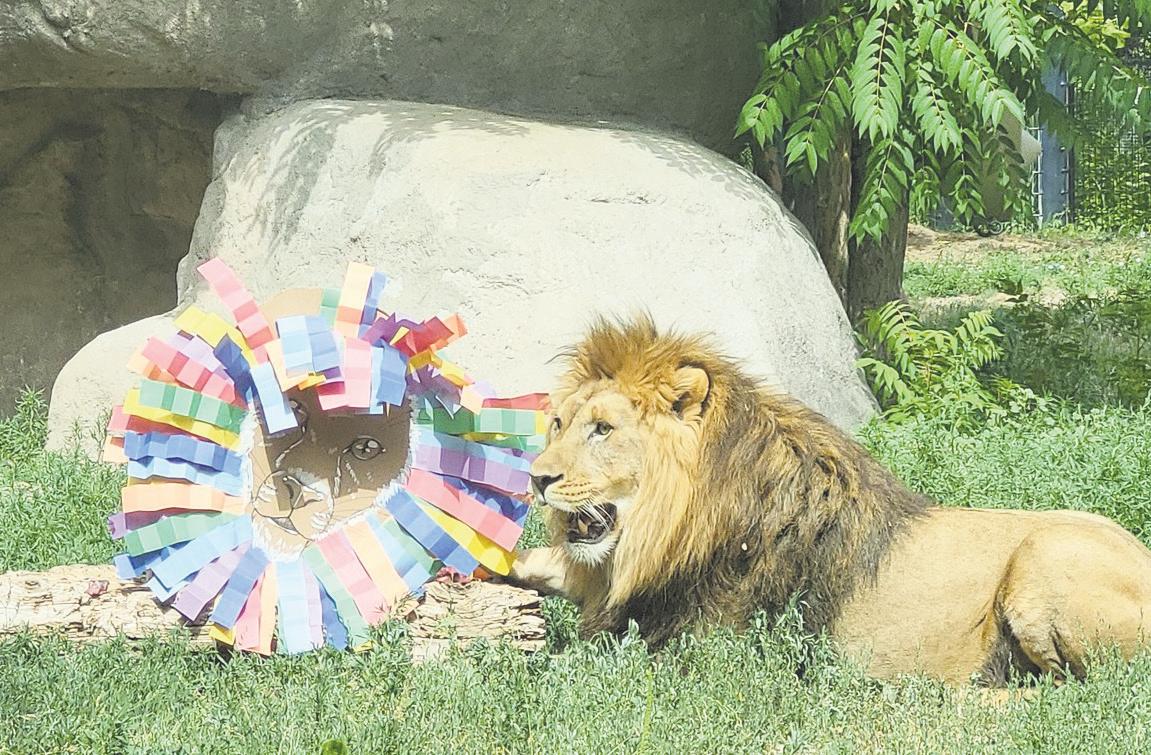





By Bree Anne Pappan
ueblo has sustained a long standing history of being a repository of public art. From the collection of murals on the levee, that is increasing by the minute, thanks to the tireless efforts and creative force that is the Pueblo Levee Mural Artists group, to sculptures dotted around the city, by such resident artists as John Wilbar, Eric McCue and Ken Williams of Williams Studios.
But it is truly mural paintings in all styles and technique that we are seeing during our daily drive that are appearing exponentially on buildings that house businesses, new and old. This very public movement of beautification is not a new backdrop or concept.
Downtown along Union Avenue, in the heart of the Arts District, murals have graced the exterior walls of buildings for many years now. These manifest as “ghost signs,” the remains of the businesses that once were, reminders of how the craft of sign painting is truly a lost art.
Many of these advertising murals have been restored alongside contemporary art murals by prolific artists, including Matte Refic.
Refic is a dynamic and versatile multi-disciplinary artist, muralist, teacher and performance artist. Many of downtown Pueblo murals boast his signature and are the backdrop for multidimensional
From blank canvases to creative opportunities: on how Pueblo muralists beautify city, bring large paintings to pedestrians



works that reside within the pedestrian areas. With the juxtaposition of large scale paintings with restaurants, outdoor gathering spaces and including the additions to businesses that are moving into 100-year-old buildings as the city continues to navigate within its “adaptive reuse” movement—artistic experiences are no longer confined within four walls of art institutions or galleries.
These new murals are tapestries that define public art spaces exhibit the countless ways in which the creative spirit can be seen, out in the open and enjoyed by many more people of our community as well as passersby.
Pueblo Levee Mural Artist Group coordinator Cynthia Ramu has a rich and continuing history with the art of murals.
“Among the 120 murals that have been approved for the Levee, 112 have been completed and eight are in progress,” she said.
Ramu coordinates a collective of artists which includes Deadhand Art, Tia Monsoon, Sarah Ballard and Jazelle Bustos among many others who make up the historic repertoire of muralists. The canvas of slanted concrete
along the levee stretches from Runyon Lake State Park to the southern point of the Nature and Wildlife Center. It is a pilgrimage for not only local and regional residents, but an attractive opportunity for muralists and large scale painters from all over the country.
The stretch of boulevard on Elizabeth street that runs from 27th Street to 28th Street, also known as the “slab,” has the remnants of four basketball courts, originally constructed during the 1930s WPA projects in the City of Pueblo.
This historic area boasts high traffic and visibility factors, making it ripe for the renovation and upgrade of the basketball courts. Luckily, a project is underway.
The Elizabeth Street Parkway Basketball Courts Project is being spearheaded by the City of Pueblo and the Parks and Recreation department, with funding from the Colorado Lottery. From a call to artists in the Spring of 2023, four artists were culled from a group of 15 proposals.
Two of these artists, Tia Monsoon and Jazelle Bustos are seasoned muralists whose works can be seen among the levee murals.
The selected designs depict Pueblo history, basketball and the Colorado Lottery logo.They will use specific court paint, working directly with the contractor to ensure the longevity of the murals on the playing surface. Additionally, the renovation will included upgraded LED lights, baskets, backboards, benches and fencing.
The total estimated cost of the project is $500,000,
“We wanted to make sure that this was done right from start to finish.”
– Mike Sexton, Pueblo Parks & Rec assistant director.
made possible by Colorado Lottery funds and their commitment to outdoor recreation in Pueblo.
“We wanted to make sure that this was done right from start to finish; this project has been in the works for three to four years,” says Pueblo Parks and Rec. Assistant Director Mike Sexton. “We are very excited about this new surface, and with the opening of this project set for early October, we know there is more to be done.”
The project is slated to be completed towards the end of September.

Another mural artist, Eric Sarracino, has just completed work on the walls that surround Mitchell Park, known as the highest point in Pueblo.
This community project, among others Sarracino is known for, was truly a collaborative effort between members of the neighborhood, the greater community and celebrated by the Pueblo Hispanic Chamber of Commerce.

Sarracino’s recognizable style and talent can be seen throughout the city. From murals that grace downtown outbuildings to the surfaces of Vinewood Park, his gift for celebrating his community, collaboration and bringing groups together is the stuff of Pueblo lore.









By Nico Grayson
Known for its rich cultural history, Pueblo has become a canvas for the Desert Art LAB, an innovative project at the intersection of art, ecology and community.
Founded by artists April Bojorquez and Matthew Garcia, Desert ArtLAB aims to explore and elevate Indigenous ecological knowledge, focusing on sustainability and climate change through the lens of art.
“We started Desert ArtLAB in 2010 in Phoenix, Arizona,” Bojorquez said. “But the roots of our collaboration go back much further. The idea was born out of a need to see our communities represented in discussions about sustainability and climate change, which were largely missing at the time.”
Garcia, originally from Southern Colorado, and Bojorquez, from Phoenix, felt a deep connection to the dry lands of the Southwest. Their ancestral Chicano ties and artistic sensibilities drove them to create a project that not only highlighted their cultural heritage but also addressed the pressing environmental issues of the region.
“Living in the desert, we were keenly aware of the challenges posed by climate change,” Garcia said. “Yet, we often saw experts from completely different environments, like London, trying to tell us how to be sustainable in the desert. That disconnect motivated us to create something that centered our experiences as Chicanos from the Southwest.”
Desert ArtLAB combines the principles of land art—a movement that emerged in the 1960s and often ignored Indigenous perspectives—with a deep respect for the knowledge and practices of the region’s original inhabitants.
The project began in Phoenix but soon expanded to other parts of the Southwest, including Southern Colorado, where it found a new home in Pueblo. Their main project in Pueblo is a large piece of land that has been re-indigenized, recultivating the land with native cacti.
“We realized that the conversations we were having in Phoenix were just as relevant in New Mexico, Southern California and especially here in Southern Colorado,” Garcia said. “So, we decided to create a field site in Pueblo to further these discussions.”
Despite the challenges of gaining institutional support in the early days, Desert ArtLAB persevered.
“When we started, there was no infrastructure for what we were doing,” Garcia said. “But as artists, we were willing to take those risks. We believed in the importance of this work, even when
Through culture & cacti: artists explore the intersection of art, ecology by cultivating the desert lands of Pueblo

there was no validation from the art world.”
Their persistence paid off when they received a Creative Capital award in 2016, which provided the funding and resources needed to establish their field site in Pueblo.
“The award was like the ‘Art Olympics’ for us,” Bojorquez said, with a smile. “It allowed us to push our project forward and really focus on creating a living, growing space that embodied our vision.”
“Living in the desert, we were keenly aware of the challenges posed by climate change.”
–Matthew Garcia, Desert ArtLAB cofounder
The field site in Pueblo has since become a hub for artistic and ecological exploration, hosting a variety of projects that engage the community in conversations about sustainability. Desert ArtLAB has also gained recognition in the broader art world, with work being featured in exhibitions and collections both nationally and internationally.
“We’ve had the opportunity to work in so many different spaces,” Bojorquez said. “From museum exhibitions to farmers markets,
we’ve navigated a wide range of environments. Each one allows us to bring art and ecology together in new and exciting ways.”
One of their most notable achievements was an exhibition in Vienna, Austria, where they created an installation with living plants—a first for the museum.
“It was a unique challenge, but it was also incredibly rewarding,” Bojorquez said. “We had to source the plants from local nurseries, and the museum even built a special table so the installation could get sunlight.”
As Desert ArtLAB continues to grow, Bojorquez and Garcia remain committed to their mission of using art to explore and promote Indigenous ecological knowledge. Their work in Pueblo and beyond serves as a powerful reminder of the importance of grounding environmental conversations in the experiences and wisdom of those who have long lived in harmony with the land.
“At the end of the day, it’s about creating spaces that reflect our beliefs and values,” Garcia said. “We want to make sure that the voices of our communities are not just included but are central to the conversation about the future of our environment.”
The team shared that often in our fast-paced world, it is easy to forget the deep connections we share with the land and the environment around us. For Bojorquez, these connections are at the heart


of their work. Their efforts not only celebrate the cultural and natural heritage of their community but also emphasize the importance of sustainability and belonging.
Bojorquez shared a powerful metaphor that encapsulates the essence of their mission: “It reminds us that it’s just this—you gotta leave some of the flowers for the bees. We can’t collect all the buds for ourselves, because then there won’t be flowers for the bees.”
“It’s evident that when something belongs and it is taken care of, it’s cared for, it can grow… and it can thrive, actually,”
–April Bojorquez, Desert ArtLAB cofounder
This metaphor is a poignant reminder of the delicate balance between taking from the land and giving back. It speaks to the broader theme of stewardship, where the well-being of the entire ecosystem is considered, rather than just immediate human needs. It is a philosophy that Bojorquez lives by, following cultural practices rooted in sustainability, to ensure that the natural environment is preserved for future generations.
Bojorquez also touched on the theme of belonging, a concept deeply intertwined with their work.
“I think just thinking about our belonging…often what we think about ourselves being generationally from these lands, and there’s this sense of belonging– we’re from here, just like these plants,” they said. “And I think that’s important to think about and to remind ourselves and our communities that we’re from here, and we belong here.”
This sense of belonging is not just about physical presence but about a spiritual and cultural connection to the land. For communities like those in Pueblo, these connections have been cultivated over
generations, and they are integral to their identity.
“It’s evident that when something belongs and it is taken care of, it’s cared for, it can grow… and it can thrive, actually,” Bojorquez said.
This work is undeniably crucial, not just for the people of Pueblo but for anyone interested in the intersection of culture, sustainability and environmental stewardship. The lessons that Bojorquez teaches are universal, reminding us all of the importance of maintaining balance in our interactions with the world around us.
Bojorquez also shared exciting news about their upcoming project: “We have some work coming up in an exhibit that’ll be at the Fort Collins Museum of Art. So that exhibit will feature Chicano artists from all over the state of Colorado. We’re the only ones from Pueblo included in that exhibit.”
This exhibit is a significant opportunity for the Desert Art Lab team to share their stories and heritage with a broader audience. It also underscores the importance of representation, ensuring that the voices and perspectives of Pueblo’s native people are heard and recognized.
Bojorquez extended an open invitation for anyone interested in learning more about their work or visiting their site in Pueblo. The warmth and openness of this invitation reflect the inclusive and community-oriented spirit that drives the Desert Art Lab’s work. It’s clear that for both Bojorquez and Garcia, this is not just a job or a project—it is a way of life, one deeply rooted in the values of care, sustainability, and belonging.
The Desert Art Lab in Pueblo is a vital reminder of the importance of staying connected to our roots, both culturally and environmentally. Their efforts to preserve and celebrate their heritage while promoting sustainability offer valuable lessons for the entire community. Whether through their upcoming exhibit or a personal visit to their site, the opportunity to engage with their work is not to be missed.


By Nico Grayson
In the heart of Pueblo, Colorado, the intertwining threads of music, culture, and heritage create an artful mosaic that reflects the community’s deep-rooted traditions. Ethnomusicologist’s Dr. Xochitl Chavez and Dr. Susan Thomas have been at the forefront of capturing these stories, emphasizing the significance of music as both a cultural expression and a means of storytelling.
For Chavez, music in Pueblo is more than just sound—it is a connection to history and identity.
“We get musical structure that’s history because those practices are based on historical links to other cultures,” she said.

This link underscores the deep connections
Pueblo’s musical traditions have with its past, tracing the origins of its unique soundscape to centuries-old practices.
Chavez’s work as an ethnomusicologist involves not only documenting these traditions but also understanding the ways they have evolved over time.
“Ethnomusicology isn’t just about the music itself; it’s about the people who create it, the contexts in which it’s performed and the meanings it holds for those who engage with it,” she said.
Pueblo’s history is also marked by its role as a place of healing.The area was once known for its sanatoriums during the tuberculosis epidemic, attracting people from across the country seeking recovery.
This legacy of healing is mirrored in the music and stories that have emerged from the community.
“Pueblo has particular medical facilities that other locations may not,” Chavez said, pointing out the city’s unique ability to offer both physical and emotional healing.
To this day, many individuals come to Pueblo to receive mental and physical healthcare that is hard to access in other places.
Music plays a critical role in this healing process.
“Some of the lyrics in Pueblo’s music are pretty intense, but they’re about self-awareness, health, and mental health,” Chavez said.
These themes resonate deeply with the community, providing comfort and connection, especially during challenging times.
The Song of Pueblo project represents more than preserving history: on resiliency, values

One of Chavez’s most poignant observations is the way storytelling through music can validate and preserve personal and collective histories: “For people dealing with Alzheimer’s or dementia, knowing that their loved ones’ stories are being recorded and remembered has been incredibly validating.
“ It’s the slow goodbye, but the fact that they were able to participate in the best way they could means a lot to their families.”
For Chavez, preserving Pueblo’s cultural heritage is not just about looking back; it is about using these stories to build a better future from the lessons we have learned from our past.
She emphasized the importance of storytelling in connecting generations and fostering a sense of pride in one’s roots.
“Some folks were really ashamed of where they came from,” she said. “But I tell them, we should never be ashamed of our humble roots. What we car-
ry in terms of our cultural practices, traditions and abilities is worth more than any monetary asset.”
The stories Chavez collects are also a valuable educational resource. They are being integrated into the curriculum, from Kindergarten through 12th grade, as part of the Colorado history project, ensuring that the next generation understands and appreciates the cultural wealth of their community.
“These interviews are being turned into resources for teachers,” Chavez said. “They can use them for lessons in language, music, history and social sciences.”
Another key figure in the Song of Pueblo project, Susan Thomas, has been instrumental in documenting and celebrating the rich musical heritage of this diverse city.
Thomas’s involvement in the project began during her tenure at the University of Colorado Boulder, where she served as the director of the American Music Research Center and a professor in the musi-
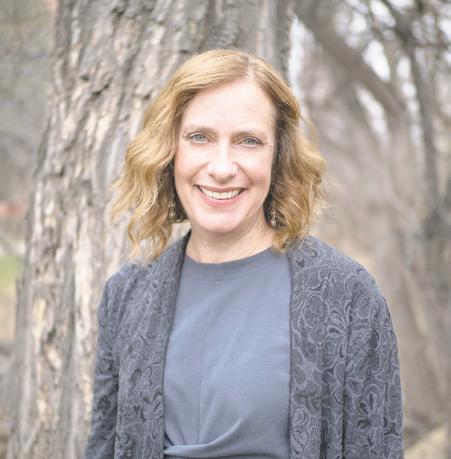
during a symposium in 2019.
“At the time, I had just started at CU Boulder, and I was thinking about how the American Music Research Center could focus more on the Mountain West region,” she said.
“Xochitl, being from Pueblo, immediately suggested I look into the city’s unique cultural and musical history.”
For Thomas, that suggestion had a lasting impact. Eventually, Thomas said they had “the perfect opportunity to explore it.”
The project’s foundation was further solidified with the introduction of a grant opportunity from the National Endowment for the Humanities. The NEH focuses on ethnographic and archaeological field research.
Though their initial proposal in 2020 was not funded, the feedback they received proved to be invaluable. With this momentum, Thomas and her team secured funding from CU Boulder’s Office of Outreach and Community Engagement, allowing them to begin their fieldwork in 2021.
“I hope that through this work, we can help preserve these stories and ensure that they continue to be told for years to come.”
–Susan Thomas, ethnomusicologist
“We were fortunate to receive support from both NEH and CU Boulder, which enabled us to bring on graduate student researchers and really dive into the work,” said Thomas. “It’s been an incredible experience, not just for the research, but also for training the next generation of scholars.”
The Soundscapes project, which encompasses the Song of Pueblo, is vast in scope: covering various musical traditions and oral histories across the city. But, as Thomas emphasized, the Song of Pueblo holds a special place within this broader initiative.
“The Song of Pueblo is just one part of the Soundscapes project, but it’s a significant one,” she said. “It’s an oratorio that was originally created by Deborah Espinoza and Daniel Valdez, and it tells the story of Pueblo through music. We wanted to document and celebrate this work because it’s a vital piece of Pueblo’s cultural heritage.”
Thomas first learned about the Song of Pueblo
during a conversation with Deborah Espinoza in 2018, shortly after she moved to Colorado. Espinoza had been a key figure in introducing Thomas to the city’s cultural landscape, leading tours for the research team and connecting them with local leaders.
“Deborah was instrumental in helping us understand the city and its history,” Thomas said. “She introduced us to the Song of Pueblo, and we knew it was something we wanted to explore further.”
One of the major milestones in the project was orchestrating the Song of Pueblo for a symphony orchestra—a task that required additional funding and collaboration.
Thomas successfully secured a grant from the Roser Visiting Artist Fund, which allowed them to bring a chamber orchestra from CU Boulder to perform the piece in Pueblo’s Memorial Hall in October 2022.
“The performance in Pueblo was a highlight of the project,” Thomas said. “We worked with local musicians, and the orchestration was done by two of our recent CU Boulder composition alums. It was an amazing experience to see this piece performed with a full orchestra.”

Reflecting on the project, Thomas emphasized the importance of training next generation scholars to value local scholarship and understand the significance of community engagement.
“This project isn’t just about documenting music; it’s about teaching our students to appreciate the local [scholarship] and to see the value in studying the communities they are a part of,” Thomas said. “We’ve been fortunate to work with two PhD students who have been with us since 2020. They’re graduating this spring, and it’s been incredibly rewarding to see them grow through this experience.”
For Thomas, the Song of Pueblo project is a testament to the power of local music: to tell the stories of a community and to connect people across generations.
“It’s been an honor to work on this project and to contribute to a greater understanding of Pueblo’s cultural heritage,” she said. “I hope that through this work, we can help preserve these stories and ensure
that they continue to be told for years to come.”
The Song of Pueblo continues to resonate with the people of Pueblo, serving as a reminder of the city’s rich and diverse musical history—a history that Susan Thomas and Xochitl Chavez have been instrumental in bringing to the forefront.
Both Chavez’s and Thomas’ work in Pueblo is a testament to the power of ethnomusicology in fostering community resilience. Through their efforts, the musical traditions and personal stories of Pueblo are being documented, celebrated and passed down to future generations.
“It’s about asking questions and allowing people to tell their story,” Chavez said. “Sometimes, the richness comes from listening closely.”
By doing so, both scholars are helping to ensure that Pueblo’s cultural legacy continues to inspire and heal, both now and in the future.



News by Jennifer Shutt - WASHINGTON
The U.S. Department of Agriculture plans to embark on a year-long study beginning next month that will test samples for evidence of highly pathogenic avian influenza from former dairy cattle moved into meat production.
Emilio Esteban, the under secretary for food safety at the USDA, told reporters on a call Tuesday the new testing program follows three studies undertaken during the spring and summer that all found beef in the nation’s food supply is safe to eat.
“However, we want to move forward with an additional step,” Esteban said. “And what this means is that when those carcasses are tested, they are held and are not going to go into commerce until we get the results back.”
The virus, also referred to as bird flu or H5N1, has been found in wild bird and domestic poultry flocks within the United States for years. But the ongoing outbreak in dairy cattle has forced animal and human health experts to establish testing for a new community of agriculture workers and livestock.
The news of additional testing for the country’s meat supply came alongside the results of a study from the U.S. Food and Drug Administration that reinforced the safety of pasteurized dairy products.
Steve Grube, chief medical officer for the FDA’s Center for Food Safety and Applied Nutrition, said that the most recent round of dairy product testing included 167 foods that were processed in 27 states in June and July.
“None of the product samples contained viable H5N1, reaffirming that pasteurization is effective,” he said. “The second survey was intended to address geographic and product gaps from the initial sampling of the commercial milk and dairy product supply that the FDA conducted during April and May.”
Federal officials have also launched a voluntary program for farmers to test the milk in bulk tanks for H5N1, a step that’s intended to make it easier for them to move their cows between states without having to individually test each one.
Eric Deeble, deputy under secretary for marketing and regulatory programs at USDA, said the department’s Farm Service Agency has approved 23 of the 35 applications it has received so far to help ease the financial burden on dairy farmers who take their herds out of production after testing positive.
The program — known as Emergency Assistance for Livestock, Honey Bees, and Farm-raised Fish — has approved more than $1 million in payments.
The price paid to farmers is based on a formula that includes the price of milk from the preceding month as well as the number of dairy cattle that contract H5N1.
Weld County and Colorado dairy in particular is rather unique in the degree to which the dairies are all closely associated with one another; both spatially and the way in which there is a lot of movement between the facilities.
– Eric Deeble, deputy under secretary for marketing and regulatory programs at USDA
Deeble said on the call with reporters that of the approved applications, a dozen are from Colorado, which has seen a sharp increase in the number of positive H5N1 tests within its dairy industry.
Deeble argued the uptick is due to certain factors within the state and cautioned people against assuming that if testing was increased in other areas of the country, the number of positive H5N1 tests for dairy cattle would spike.
“I don’t think that it is accurate necessarily to extrapolate from the situation in Weld County, Colorado,” Deeble said. “Weld County and Colorado dairy in particular is rather unique in the degree to which the dairies are all closely associated with one another; both spatially and the way in which there is a lot of movement between the facilities.”
“It is a tightly integrated dairy community that’s isolated from much of the rest
of the state, and there is a lot of connectivity between the premises in the way in which they use vehicles, support services, milk trucks,” Deeble added.
During the last 30 days, five states have had dairy cattle test positive for H5N1, including Colorado, Michigan, Minnesota, South Dakota and Texas.
Colorado holds a disproportionate number of cases with 26 of the dairy herds to test positive, while the other four states combined hold a total of six herds.
Other mammals diagnosed with H5N1 during the last six weeks are overwhelmingly in Colorado, which has found the virus in house mice, deer mice, domestic cats, a desert cottontail and a prairie vole.
Public health officials said during the call Tuesday they are beginning to look more closely at when and why cats are being affected by the spread of H5N1.
Barn cats as well as those that hunt outside, coming into regular contact with wild birds that hold a reservoir of H5N1, have tested positive for the virus before.
But a report from the Colorado Veterinary Medical Association earlier this month noted that two of the six cats diagnosed with H5N1 in that state this year “were indoor only cats with no direct exposures to the virus.”
Public health officials on the call were unable to answer a question about how indoor-only cats would have come into contact with H5N1.
Experts on the call cautioned that as fall approaches, wild birds will begin migrating and dairy farmers will likely ship their cattle at higher rates, both of which could lead to an uptick in the number of positive cases of H5N1 being reported in dairy cattle as well as other animals.

Lia Chien contributed to this report.
Colorado Newsline is part of States Newsroom, a nonprofit news network. Contact for questions: info@coloradonewsline.com.

Originally published in July.
Fountain Creek is the waterway that flows, bubbles, surges and provides wildlife habitation from its headwaters in Woodland Park through Pueblo’s East side, which meets the Arkansas River in Pueblo—this meeting is called a confluence.
In the last 15 years, the Fountain Creek Watershed District has been restoring the creek’s natural beauty, managing flows as well as water quality from upstream and providing recreational opportunities for citizens.
Over $30 million have been spent in creek restoration projects, over 150,000 tons of trash has been removed and thousands of citizens have learned about the Creek and become Watershed Warriors.
Great strides have been made, but there is much more to be done.
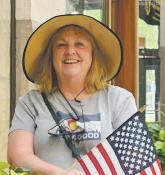
A Watershed District Committee was established to prioritize and wisely use $50 million from Colorado Springs Utilities, as part of the Southern Delivery System’s 1041 Permit. Per the permit, those funds are to be used “for one or more new projects” in the Fountain Creek Watershed between Colorado Springs and the Arkansas River confluence in Pueblo “that create a significant and not merely incidental benefit to Fountain Creek within Pueblo County.”
The FCWD celebrated the tenth anniversary of “Creek Week” in October. This is Colorado’s largest cleanup effort. Over 4,000 people from 10 communities participated, spanning from Palmer Lake to Pueblo.
The 2024 Creek Week event is Sept. 28 to Oct. 6, and everyone is welcome to participate.
The District secured Great Outdoors Colorado grant funds in partnership with the Mile High Youth Corps. A crew of over 20 individuals, aged 18-24 years, worked in the heat along Fountain Creek in Pueblo at Confluence Park.
Their focus was to remove Tamarisk, Russian Olive and Elm saplings—all invasive, non-native tree species. This will allow natives like willow and cottonwood to spread and thrive and the effort supports biodiversity of many wildlife species.
The MHYC crew also rebuilt a washed-out retention wall of boulders on the Creek at 13th Street in
Pueblo, to reduce erosion and direct high flows.
Confluence Park, managed and maintained by Pueblo County Parks and Recreation Department, has seen many improvements over the past three years.
The parking lot boasts a welcoming archway and sees lots of traffic from bicyclists, walkers, joggers and pet owners looking for access to the creekside concrete trail.
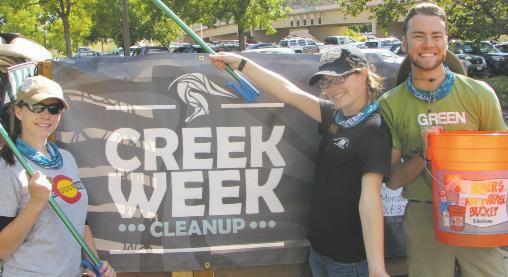
The District’s MMF funds supported a drainage improvement project on and adjacent to the Fountain Creek.
New picnic pavilions and tables were constructed in December, with new trash receptacles and a pet waste bag dispenser will be installed this month, complete with bilingual signage.
Through grant funding from Xcel Energy Foundation and separate funds from the Colorado Department of Public Health and Environment’s Water Resources Division and the EPA, public education and outreach have increased in Pueblo County.
Hundreds of students have learned about watershed geography, creek macroinvertebrates and seen presentations on nonpoint source pollution prevention.
The FCWD led a dedicated group of government staff, elected officials and water activists on a “Ride the Watershed” bike tour through Pueblo. Guest speakers along the route met riders to explain past engineering projects, discuss current issues and build stronger partnerships.
The FCWD hosts Colorado’s only Brewshed Alliance, a group of over 25 craft breweries from Monument to Pueblo who support clean water initiatives by participating in and hosting events and fundraisers as well as elevating the District’s work.
The group’s motto is “Clean Water = Great Beer.” Alli Schuch, executive director of the Fountain Creek Watershed District said that beer is a touchstone for reaching out to Coloradoans.
”Beer culture is a big part of Colorado,” Schuch said. “Whether you’re a resident or a visitor, we are all impacting the land and the waters just by living here, playing here and working here. Working with
our local breweries is a great fit for us, and we invite you to raise a glass to clean water by visiting any of our member breweries.”
One of the most popular events that Alliance members host are the monthly, free “Liquid Lectures.”
The next Liquid Lectures will be held on July 18 at Shamrock Brewing in Pueblo, and also at Peaks N Pines Brewing in Colorado Springs.
Participants receive $1 off pint draft beers during the event.
The Brewshed members co-brewed an ‘Impactful IPA’ last year in honor of the 10th Annual Creek Week.
This year’s collaborative brew, ‘Flower Eater,’ is a honey lavender pale ale at select members’ breweries. One dollar from every pint sold will be donated to FCWD to promote and fund clean water initiatives.
The shining gem identified those years ago is transforming into a crown jewel more and more every year through the dedicated, consistent efforts and actions of the Fountain Creek Watershed District Board of Directors, committees, staff and citizen volunteers that care about the environment, collaborative planning and partnerships.
We invite you to join us for an event, follow us on social media, and join our monthly e-newsletter list. Follow our Facebook page, Fountain Creek Watershed District or visit our website at fountain-crk.org.

Susan Finzel is the Pueblo Area outreach coordinator for the Fountain Creek Watershed District.
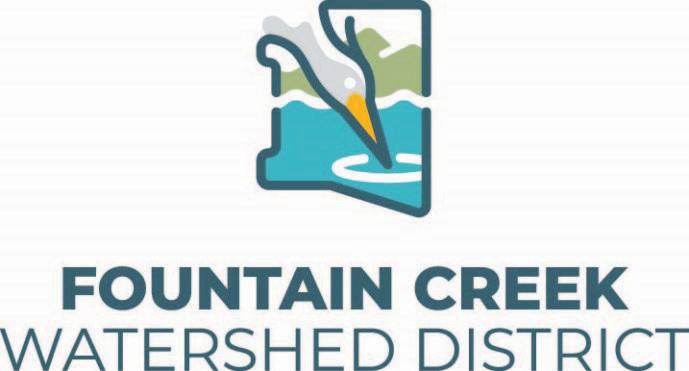
For the thriving life of the watershed and all it touches

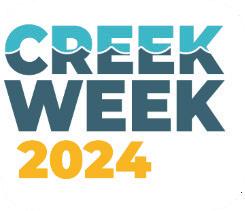
SAVE THE DATES
SEPT. 28 - OCT. 6
As a resident or visitor in Pueblo and El Paso Counties, YOU can make a big difference in protecting Fountain Creek : Illegal dumping threatens the beauty of Fountain Creek and ruins the wild ecosystem there. Dumping large items like bags of household trash, couches and tires in the woods, on shorelines or roadsides does not dispose of them and is incredibly damaging to the watershed. Learn how to properly dispose of discards and larger items in your community.




Dispose Properly!
Volunteer Registration Opens Soon!
Keep Butts in your Vehicle!
Cigarette butts are the #1 item littered by weight in the US. Never throw a butt out a car window nor toss to the curb! Cigarette butts contain many toxic chemicals, sicken birds and animals, and can start roadside fires. Empty cold ash tray contents into a trash can.
Scoop the Poop! www.fountain -crk.org
A single gram of dog waste contains 23 million bacteria, viruses, and parasites. Poop left behind can cause illness to people, pets and wildlife, and contaminates aquatic ecosystems. Pet waste also creates unhappy neighbors and pollutes drinking water supplies. Always carry a plastic bag on dog walks. Put your pet’s waste in the bag and toss it in the trash can.
Cover Up!
Keep lids down on garbage cans and recycling bins to prevent litter from being blown into Fountain Creek or scattered by animals. Securely cover all pickup trucks and trailer loads before travelling. Loose, natural items like discarded leaves and branches will clog storm drains.


The Beulah Arts and Crafts Festival is more than just an annual gathering of artists, musicians, and craftspeople. It’s a celebration of heritage, community and the shared love of creativity that binds us all. Several talented individuals’ work not only reflects their artistic passion but also the deep roots of their personal histories.

Arts & Crafts Festival celebrates makers of every kind within Beulah

Acayla Haile, a talented artist from Texas, shared her love for acrylic painting and silversmithing.
“My inspiration comes from water and sky,” she explained. “I like a realistic style with a mystical element, trying to see the more mystical side of nature.”
Kala’s background in water resource management and plant and soil sciences deeply influences her art.
“Especially in Texas, where everything depends on water,” she added, emphasizing the vital role of water in her life and art. Though it’s her first time at the festival, she was captivated by the beauty of the valley and the strong sense of community.
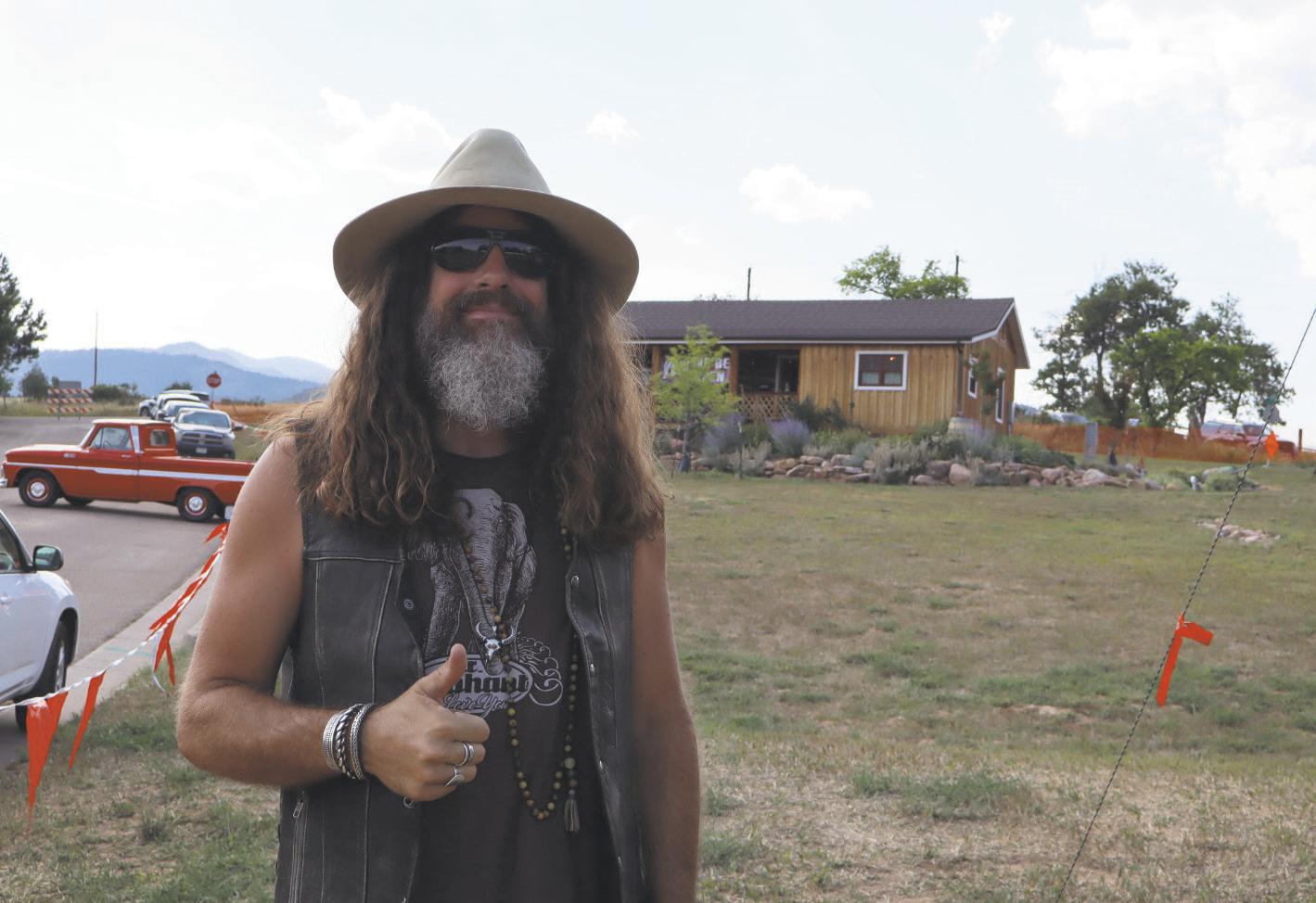

Ryan Chrys, who is a performer in the band Ryan Chrys and the Rough Cuts, brought a unique blend of outlaw country and rock and roll to the festival.
“Music is a universal language,” Ryan explained. “It’s a beautiful escape that fosters community.”
With a deep musical lineage—his mother was a musician, and his bass player Susan’s father ran a music shop—Ryan believes heritage plays
a crucial role in their music.
“We carry a feeling and attitude of respect for those that came before us,” he said. The band, which tours across the West and even internationally, was thrilled to perform in Beulah for the first time, praising the valley’s magical atmosphere.
Sol Santini, a young artisan, filled her booth with whimsical, brightly colored earrings that caught the eye of festival-goers.
“I started making earrings for myself,” she said, “and then my friends and family encouraged me to start selling them.”
Sol’s creative process is simple yet meaningful—bending metal to create playful pieces that bring joy to those who wear them.
“I love when people ask me about my earrings,” she shared. “It’s a
way to connect, and it makes me happy to know that my work brings joy to others.”
Sol emphasized the importance of having a strong support system, saying, “My family and friends mean everything to me. Without their support, I wouldn’t have pursued this.”

For Ella, an artist and visitor from Oklahoma, the festival was a delightful discovery. “I love art in all its forms,” she said. “Drawing, painting, fashion—these are all ways I express myself.” Visiting Beulah for the first time, she was struck by the beauty of the area and the closeness of the community. “It’s really important for artists to meet each other and support one another,” she noted. “Gatherings like this allow us to show off our work, meet new people, and grow our crafts.” Ella’s excitement about being part of such a vibrant artistic scene was evident as she expressed her gratitude for the opportunity to connect with other creatives.
As the sun set over the Beulah Valley, the festival’s true essence became clear. It’s not just about art, music, or crafts—it’s about community, heritage, and the shared love of creating something beautiful. Whether through paintings, brooms, music, or earrings, the festival-goers found a common thread that connected them all: the desire to honor the past while crafting a vibrant future.


Penny Beiber and her husband make handmade brooms—a craft that traces back to Penny’s great-grandfather, a broom maker in Coolidge, Kansas.
“We got started accidentally,” she recalled. “We found out about my great-grandfather, and for Christmas, we decided to make some brooms ourselves.”
After a few failed attempts, the couple studied with a broom maker in Arkansas to perfect their craft. Penny’s love for
this traditional art form is deeply tied to her family heritage.
“It’s all because of our ancestry,” she said, reflecting on the joy of carrying on a family tradition. Though they live outside Trinidad, Colorado, Penny feels a strong connection to the Beulah community and appreciates the festival’s emphasis on heritage and craftsmanship.

Colorado Newsline by Sara Wilson
APueblo County judge considered arguments Tuesday for and against a citywide ordinance to prohibit syringe exchange programs, three months after the Pueblo City Council passed the controversial measure.
The court’s decision on the merits of the case and whether to block enforcement of the ordinance will determine whether two syringe exchange programs in the city can continue to provide sterile injection equipment to people who use drugs.
Those sites are places where people who use drugs can access sterile needles and other paraphernalia for free, as well as get connected to resources and support services. The harm reduction approach at the sites intends to reduce disease transmission and prevent overdose deaths.
In May, Pueblo City Council voted 5-2 to effectively ban syringe exchange programs in the city.
Colorado Health Network and the Southern Colorado Harm Reduction Association then sued the city over the ordinance, and District Court Judge Tayler Marie Thomas granted a temporary restraining order on the ordinance ahead of the case’s first hearing on Tuesday.
have the ability to provide access to sterile injection equipment.
“This isn’t an issue where there’s some overlap between what state law authorizes and what the ordinance prohibits. The only thing it prohibits are activities that are authorized and exempted from prosecution under state law,” attorney
“The state has just as much of an interest in preventing needless and unnecessary deaths from overdose ... The ordinance gets in the way of it by creating large access gaps in the state.”
–James Albert Kelly, attorney for CHN and SCHRA
Attorneys for CHN and SCHRA argued that a state law allowing syringe exchange programs to operate, and a 2020 amendment that allows experienced nonprofits to operate them without local interference supersedes the Pueblo ordinance. That state statute sets minimum requirements for syringe exchange programs, attorneys said, including that they
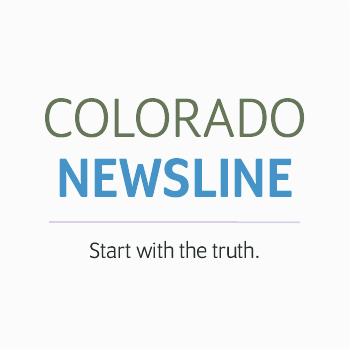

James Albert Kelly said. That satisfies the Colorado Supreme Court’s standard for “operational conflict” under the City of Longmont v. Colorado Oil and Gas Association precedent, Kelly said.
Additionally, the state has a declared interest in reducing the spread of blood-borne disease and preventing overdoses. Concerns about prohibitive ordinances are what led the Legislature to amend the statute in 2020 to allow nonprofits like CHN and SCHRA to operate a syringe exchange program without local health board approval.
“The state has just as much of an interest in preventing needless and unnecessary deaths from overdose whether those occur in Pueblo, Grand Junction, Denver or elsewhere,” Kelly said. “The ordinance gets in the way of it by creating large access gaps in the state.”
Attorneys for the city argue that the ordinance is narrowly tailored to the distribution of syringes, and does not affect the programs’ ability to offer services like disease testing, education and opioid antagonist distribution.
Attorney Geoffrey Klingsporn said the state statute and city ordinance need to be absolutely irreconcilable for the ordinance to be struck down, which the plaintiffs have not proved is the case.
“The ordinance’s main concern is clean syringes, empty syringes being handed out,” he said. “They need to point to a specific mandate in the state statutes that requires the plaintiffs hand those out. They
“Whether that access requires distribution is the textual question that the court must answer.”
–Geoffrey Klingsporn, attorney for City of Pueblo
haven’t met that.”
Under state statute, a syringe exchange program must have the ability to provide people with “access” to sterile injection equipment.
“Whether that access requires distribution is the textual question that the court must answer,” Klingsporn said. The city ordinance, he said, is concerned with distribution. Thomas questioned, however, how a needle exchange program could be called such without the ability to exchange needles.
Additionally, Klingsporn argued that when read as a whole, the statute gives municipalities the power to opt out of a syringe exchange program, even if the program began under that revised subsection from 2020.
“As the city reads that subsection and that amendment, it does not create a zone completely outside local control,” he said. “It does not immunize a syringe exchange program from all regulation by the municipality in which it decides to land.”
Thomas said she will hand down her order on the matter within three weeks.

Colorado Newsline is part of States Newsroom, a nonprofit news network supported by grants and a coalition of donors as a 501c(3) public charity. Colorado Newsline maintains editorial independence. Contact Editor Quentin Young for questions: info@coloradonewsline.com. Follow Colorado Newsline on Facebook and X.

Family Care Specialists is excited to announce that we are now offering Behavioral Health services.
Ages 3 and older
All insurances accepted including Medicaid and Medicare.
Private pay based on sliding scale.
Individual, Family, Couple, and Marriage Counseling
Sports Psychology Therapy for performance improvement
Addiction counseling, including post-addiction support
Teen depression and anxiety counseling
Play Therapy for children
Psychological testing and Mental Health evaluations for IEP (Individualized Education Program) and 504 Plans

Open to all insurances including Medicaid and Medicare, and also private pay based on sliding scale. Call 719-543-6633


Audrey is a recent graduate of Colorado State UniversityPueblo where she received her Master’s of Social Work degree. As a dedicated social worker, Audrey is passionate about fostering change in the lives of individuals and families. She believes in the power of collaboration and strengths-based approach to therapy, empowering clients, and creating positive change.

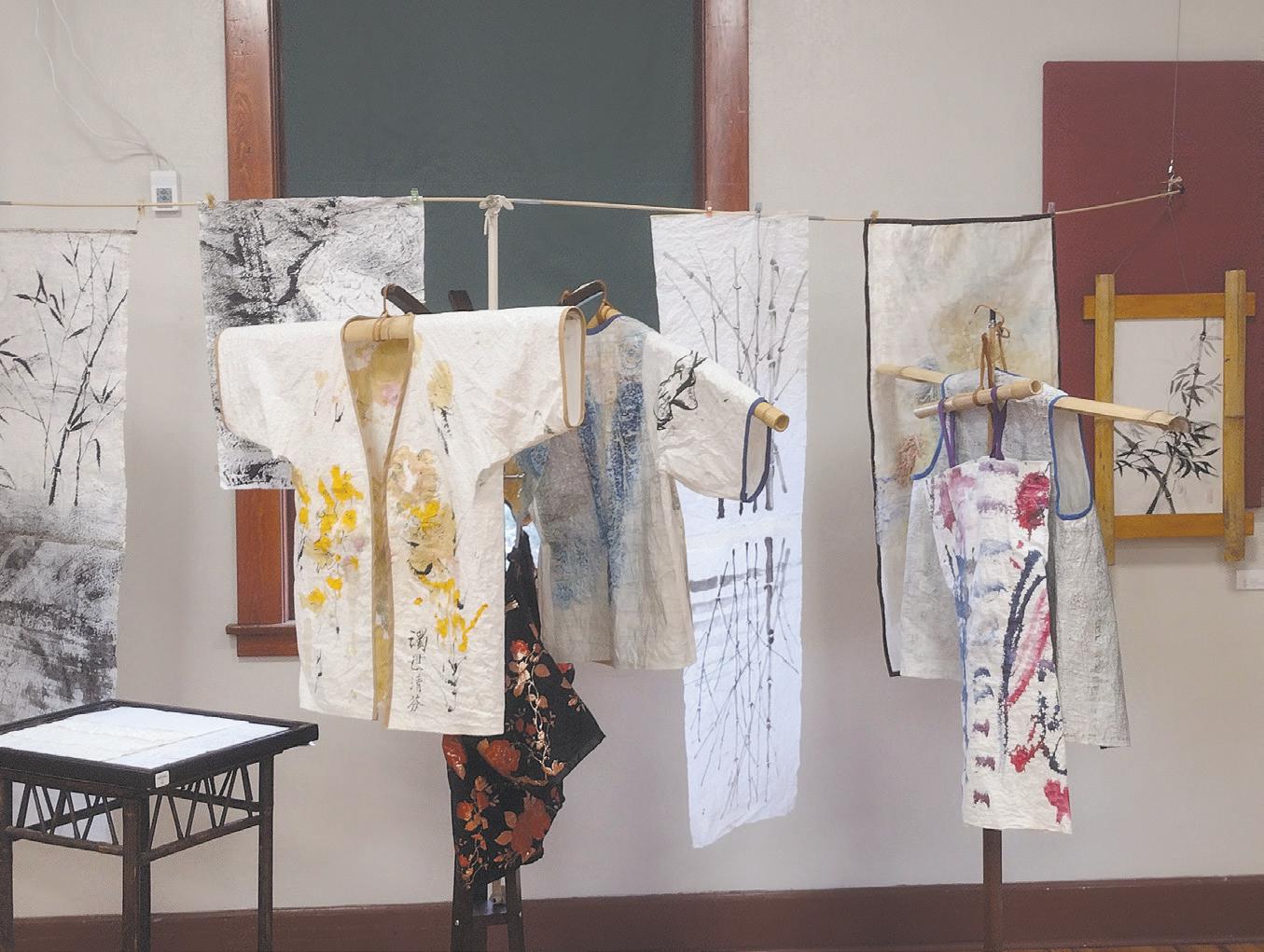
by Gregory Howell
First Fridays in Pueblo are dedicated to celebrating art. Exhibits and galleries throughout the city host a rotating crowd of people, taking in the works and engaging with the artists behind them.

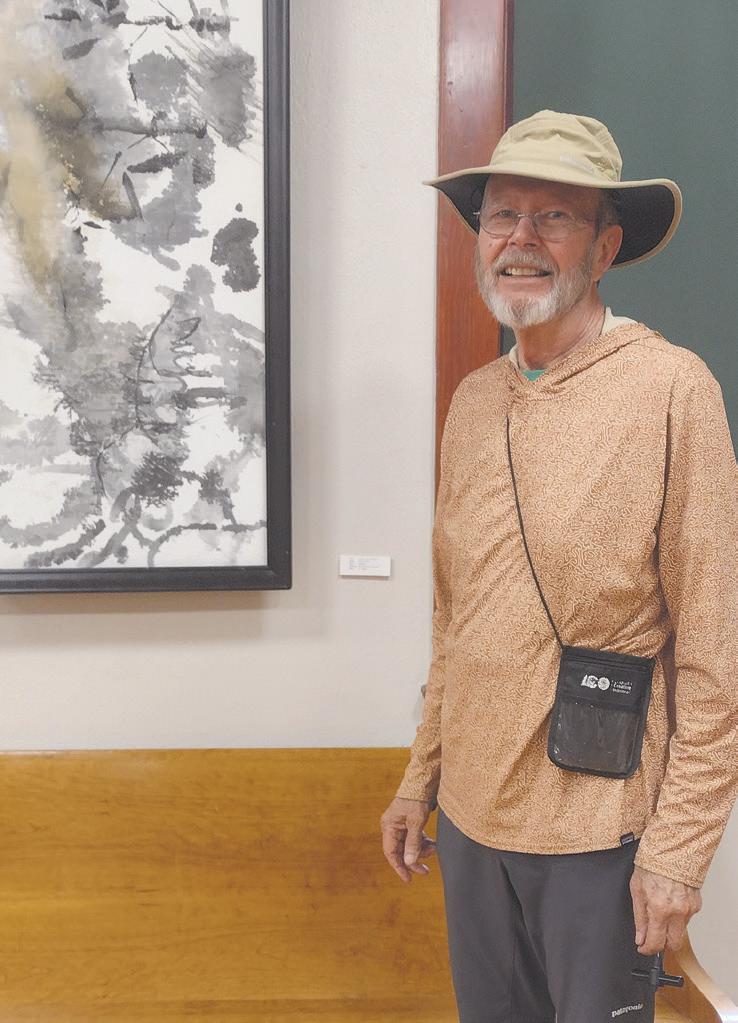






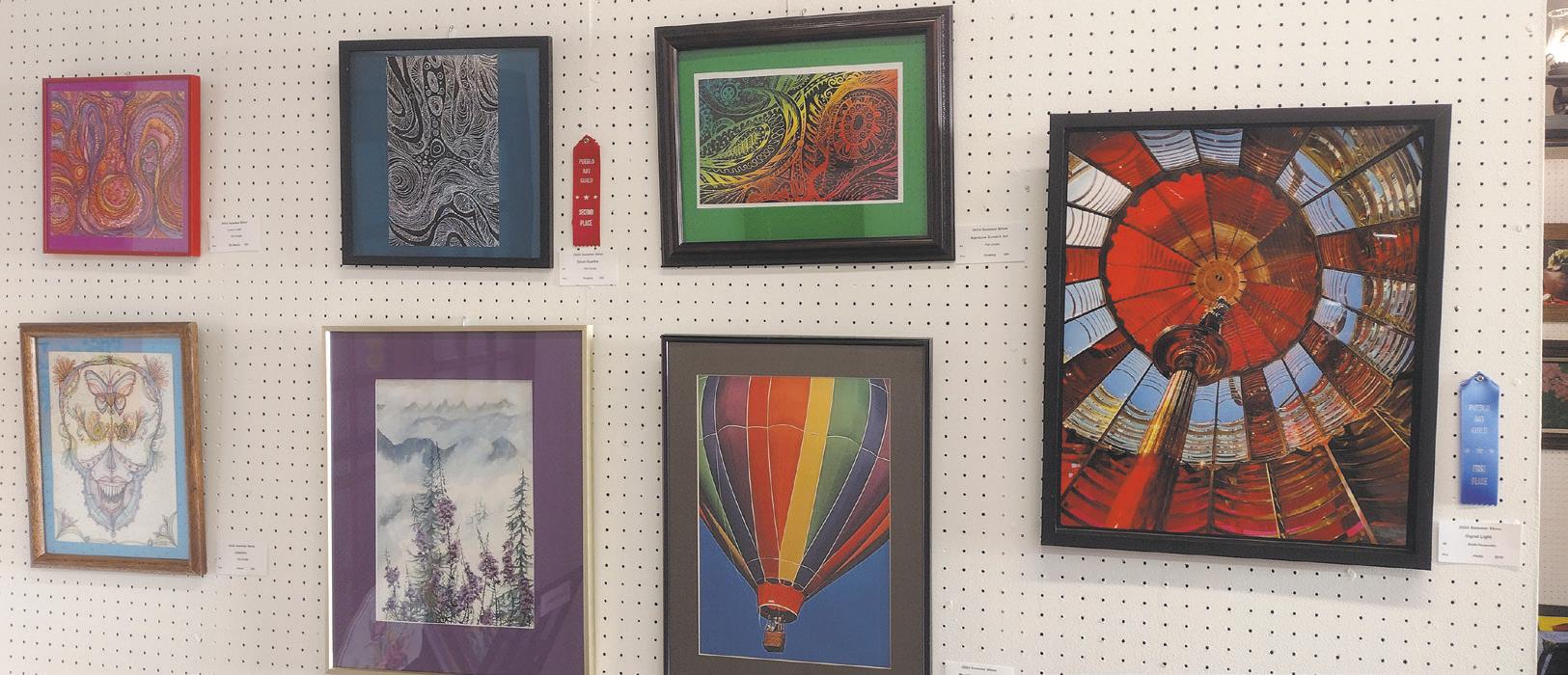
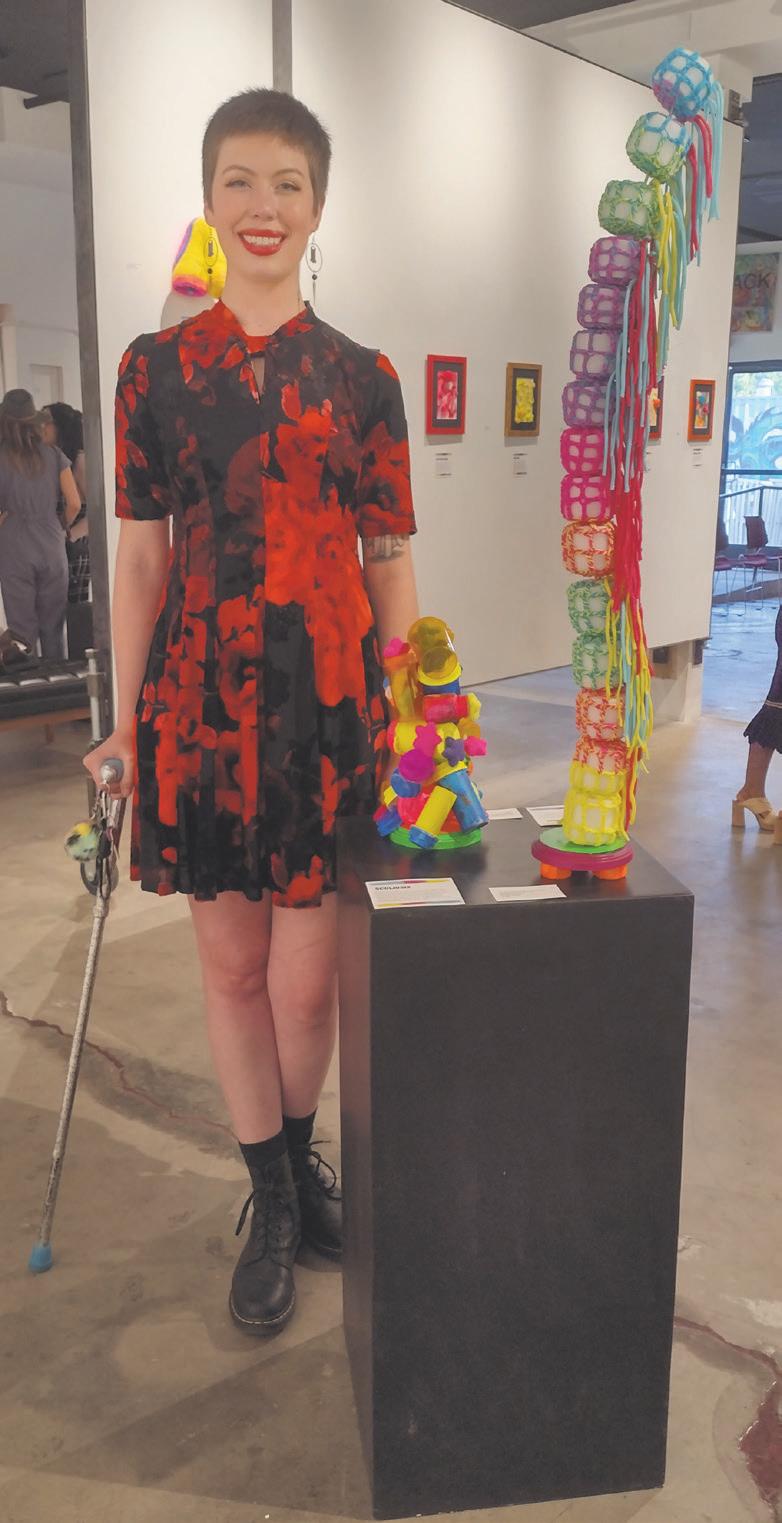


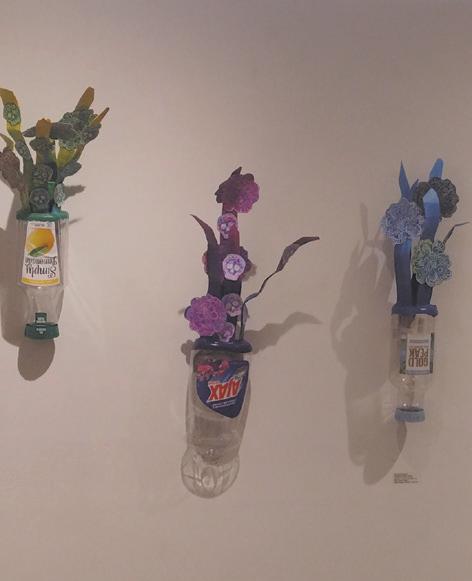
John-Deaux
Blo








By Catherine O’Grady
Southern Colorado SBDC coordinator
You’ve likely heard the phrase, Where there’s a will, there’s a way. At the SoCo SBDC, we have our own version of this and it goes…
Where there’s a need, there’s a class! In the ever-evolving landscape of small business, continual education is not just an option—it’s a necessity. As industries, culture, and technologies transform through time, staying ahead of the curve through
ongoing learning can be the difference between thriving and merely surviving.
Small businesses, often operating with limited resources, face unique challenges that require innovative solutions and adaptive strategies. There isn’t always the ability to simply hire out to get something done. This is where continual education for business owners is a dire need, and where The Southern Colorado Small Business Development Center (SoCo SBDC) and similar organizations step in.
The educational necessities of the small business

Brian Estrada SBDC Executive Director

This month, we want to emphasize the importance of a commitment to continuing education. In the ever-evolving landscape of small business ownership, one principle consistently proves beneficial: a dedication to continuous learning and professional development. I understand that time constraints and costs can make this challenging for small business owners.
However, I want to remind you that the Southern Colorado Small Business Development Center (SBDC) is here to help. We provide various training opportunities each month at little to no cost. This cost-effective approach ensures that all small business owners can benefit from ongoing education without financial strain.
The SBDC offers a wide range of training programs covering essential business topics such as financial management, marketing strategies, business planning, and soft skills training. These programs are designed to address the diverse needs of small businesses at various stages of development. We offer multiple ways to attend a class, including in-person, virtual, or via the web with our pre-recorded classes.
Along with our educational opportunities, we offer personalized support to all participants. Our business advisors provide tailored advice and mentorship to help you develop customized strategies that align with your goals and challenges.
To learn more of what is available at the Southern Colorado SBDC, visit our website at southerncoloradosbdc.org or call our office at 719-549-3245.
You can also sign up for our newsletter to receive updates on upcoming classes and events at lp.constantcontactpages.com/su/BOCk3Q4/southerncosbdc.
To learn of educational opportunities and programs available statewide visit the Colorado SBDC website coloradosbdc.org.
Warm regards,
Brian Estrada Executive Director Southern Colorado SBDC
community are as vast as the types of industries that exist. Taking on this this challenge to offer classes to help as many businesses as possible is a huge undertaking, and one which the SoCo SBDC takes very seriously. Not only this, but to also to offer these classes free whenever possible or for a fee small enough that even a struggling business owner can afford them. In this vain and in the spirit of Back to School, we felt is was a good time to share with the readers what educational opportunities are up coming from SoCo SBDC.
To offer educational opportunities on as many topics as possible, to a busy and vastly diverse community, hundreds of classes are offered as replays to stream online. These classes are available not only from the SoCo SBDC, but from all of the SBDC centers around the state. Many are free and some come with a nominal fee, but all are waiting to be utilized day or night. To access these videos, go to www.coloradosbdc.org and click on On-Demand Library.
Thanks to a partnership with Vectra Bank, each month the SoCo SBDC hosts a Business Start In A Day Class for FREE! This 3-hour in-person class is hosted at Rawlings Branch of the Pueblo Library. It is designed to give an overview of the essential steps to get a small business up and running. Students also learn the services, support, and resources available from the SBDC and the community at large to h-elp a new business succeed. Upcoming class dates are August 5th, September 16th, and November 4th. Classes run from 9:30am to 12:30pm. Pre-registration is required at www.southerncoloradosbdc.org
SoCo SBDC is proud to be bringing the Outdoor Industry Summit to Canon City, CO on September 19th, 20th, and 21st. The three-day summit will feature educational opportunities on topics such as Empowering Sustainability in Business, Outdoor Industry Value and Economic Impact, Inspirational Business Models, and Collaborative Partnerships + Funding. It will also future networking opportunities, Outdoor Adventures and Demonstrations, a vendor show, and more! For more information please visit Southern Colorado SBDC on Facebook, online at www.southerncoloradosbdc.org, or by contacting Catherine O’Grady at 719-549-3245.
Google can be a powerful resource for a small business, if you understand how to use it. Two to

three FREE virtual google classes are offered every month through SoCo SBDC and taught by the Grow Your Google Professional Maria Elena. In August come learn how to Increase Your Google Visibility (08/21/24) and Google Sales Tools (08/28/24) These classes are at 11am and can be registered for by going to www.southerncoloradosbdc.org
Understanding the Anti-Discrimination Act not only protects your business but allows you to operate comfortably know you are executing best practices to accommodate everyone. Kelly Wesolosky, Outreach Education and Community Advisor at the Colorado Civil Rights Division, will be teaching these FREE, virtual classes at 12pm: August 29th: Employment Discrimination 101 and the Colorado Anti-Discrimination Act, September 26th: Fair Housing 101 and the Colorado Anti-Discrimination Act, and Octo-














ber 22nd: Discrimination in Places of Public Accommodation and the Colorado Anti-Discrimination Act.
Upcoming classes and workshops to watch for in 2025 will include Cottage Food Certification, How to Start a Food Truck, How to Utilize a Commercial Kitchen, Cyber Security, Basic Business Accounting, and Diversity, Equity, and Inclusion Trainings, Getting the Most from Your Vendor Class, Etsy, Crowd Funding and more. Not seeing a training or class you need let the SoCo SBDC know and we’ll try to help.
For the betterment of your business, yourself, and your community it’s time to get Back to School.


Natural light photographer in Pueblo Colorado & surrounding areas.
Alyssa Vallejos Photographer 719-250-1762
www.photographybylyss.com
Specializing in commercial, residential and auto locksmith services.
Locally owned, family business
Daniel Sandoval/Owner 719-251-2925
www.surelocklocksmith.com


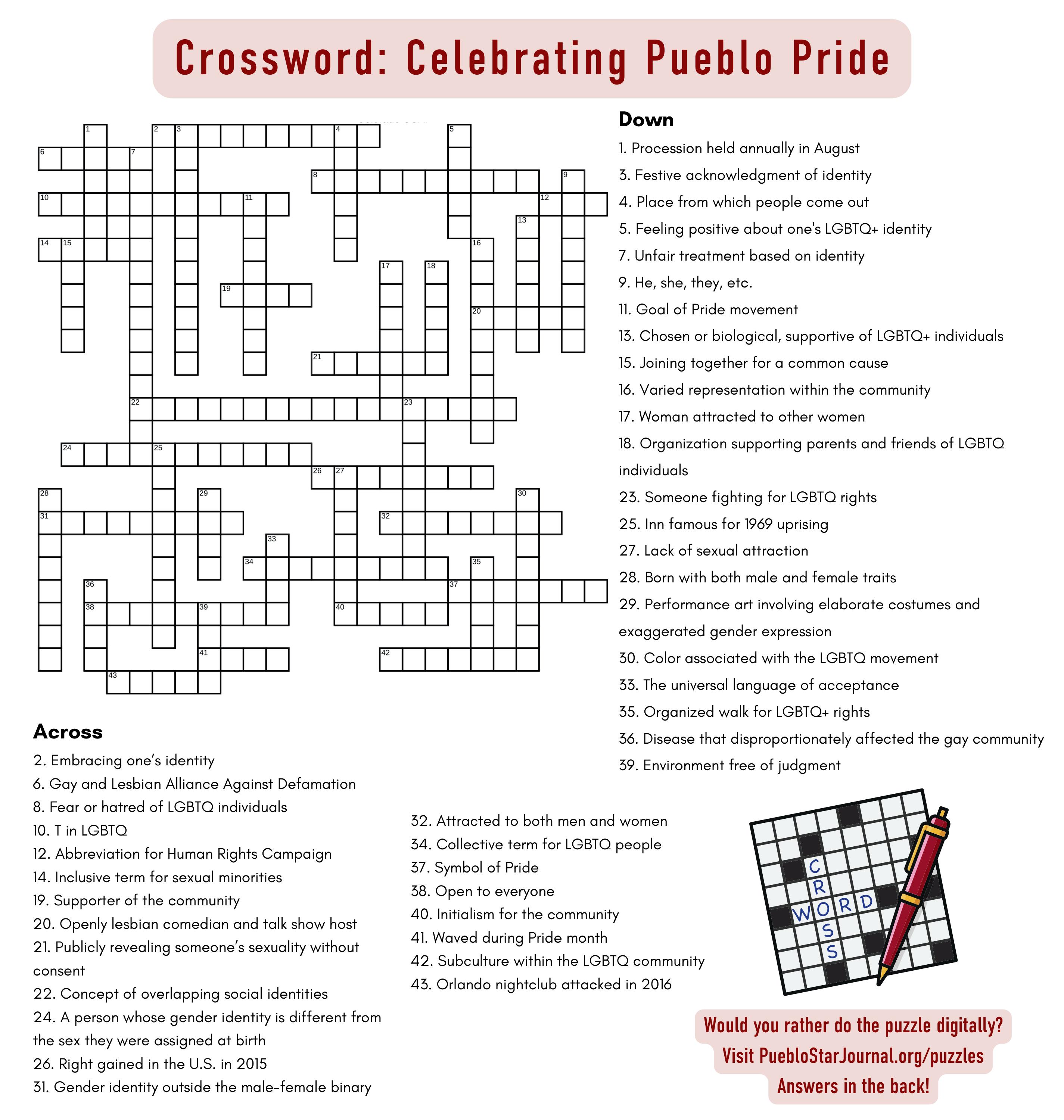

Portraits of Nature: Myriads of Gods exhibition 10 a.m.-4 p.m. Tuesday through Saturday through Jan. 11
Sangre de Cristo Arts Center, 210 N. Santa Fe Ave.
Info: sdc-arts.org
The id @ The Ethos
Second Thursdays, The Ethos, 615 E. Mesa Ave. Info: ethospueblo.com
War Memorial Ghost Tours
8 p.m. first Saturdays, Pueblo Weisbrod Aircraft Museum, 31001 Magnuson Ave.
Info: puebloghosttour.com
Pueblo Rocks in the Park
Noon-2 p.m. Fridays, Ray Aguilera Park, 840 W. Northern Ave.
Just a Regular Pool Night
4:30-11 p.m. second and fourth Wednesdays, The Ethos, 615 E. Mesa Ave.
Info: ethospueblo.com
Game Knight Games
1839 S. Pueblo Blvd.
Info: gameknightgamesllc.com
Pokemon, Dungeons & Dragons, Magic: The Gathering, Keyforge, My Hero Academia, board game league and more. Weekly game schedule available on website.
Chaos Games & More
4065 Club Manor Drive
Info: chaosgamesandmore.com
Pokemon, Dungeons & Dragons, Magic: The Gathering, Warhammer 40K, board game nights and more.
Weekly game schedule available on website.
Line Dancing
EZ 4 p.m., Country/Classic 6-7 p.m. Wednesdays, Eagleridge Event Center, 805 Eagleridge Blvd., Suite 170
Info: facebook.com/PuebloDanceCompany
Cocktail Hour with Live Music
7-9 p.m. Wednesdays, Analogue Bar, 222 N. Main St.
Info: facebook.com/AnalogueSolar
Open Mic at Blue Cactus
6-9 p.m. Thursdays, El Nopal’s Blue Cactus Room, 1435 E. Evans Ave.
Info: 719-564-9784
First Thursday Open Mic Night
6:30-9 p.m. first Thursdays, The Ethos, 615 E. Mesa Ave.
Info: ethospueblo.com
Live Music Fridays
7-9 p.m. Fridays, Analogue Bar, 222 N. Main St.
Karaoke Night at The Fallout with KJ Mikey D.
9-11:30 p.m. Fridays, 1227 S. Prairie Ave.
Info: facebook.com/PuebloFallout
Alt Night at Analogue
7-9 p.m. last Saturdays at Analogue Books & Records, 216 N. Main St.
Karaoke
Second Saturdays and third Thursdays, The Ethos, 615 E. Mesa Ave.
Info: ethospueblo.com
Essentrics fitness classes
10-11 a.m. Mondays and Wednesdays at Pueblo City Park George L. Williams Pavilion, 801 Goodnight Ave.
Info: 719-470-3017, essentricswithkatiefarmer@ gmail.com, essentricswithkatiefarmer.com
Seniors: Riverwalk Walking Group
Meets 10 a.m. Mondays in front of Senior Resource Development Agency (SRDA), 230 N. Union Ave.
Info: 719-553-3446 or richmond@srda.org
Yoga: Hun Yuan Qi Gong
10 a.m. Tuesdays and Thursdays at Anahata
Healing Yoga Studio, 3942 Ivywood Lane
$5/class; Wednesdays and Thursdays on Zoom (no charge); Sundays at City Park Ballroom, George L. Williams Pavilion, 801 Goodnight Ave.
Yoga and Cocktail Night
5:30 p.m. second Tuesdays
Ren Yoga Flow, 110 W. Fifth St.
Analogue Books & Records, 216 N. Main St.
Info: renyogaflow.com
Vibration meditation
6-7 p.m. Wednesdays, Ren Yoga Flow, 110 W. Fifth St.
Info: renyogaflow.com
Wellbriety Support Meeting
9-10:30 a.m. Wednesdays, Center for Inner Peace, 740 W. 15th St.
Info: 719-543-2274
Prenatal Workshop and Support Group
6-7 p.m. last Wednesday of each month, Phoenix Massage, 105 W. Fifth St. Info: socodoulaco@gmail.com
Inner Alchemy
6-7 p.m. Thursdays, Ren Yoga Flow, 110 W. Fifth St.
Info: renyogaflow.com
Ladies Night Out Self-Defense Training
6-8 p.m. first Fridays, Rocky Mountain Empowerment Center, 330 Lake Ave. Info: $39. 800-748-2074
Mom Group hosted by SoCo Doula Collective 9:30-11:15 a.m. last Fridays at Sweet Ella’s Bakery, 110 S. Union Ave.
Full Circle Healing
10-11 a.m. last Sundays, Wild Child Yoga, 281 S. Joe Martinez Blvd., Pueblo West Info: 719-289-8677
Interfaith meditation and service
10-11:30 a.m. Sundays, Center for Inner Peace, 740 W. 15th St. Info: 719-543-2274
Underground Improv rehearsals
10 a.m.-noon Sundays, 6-8 p.m. Wednesdays, weekly meeting 6:30-7 p.m. Sundays
Wake Up! Pueblo, 102 Oneida St. Info: facebook.com/UndergroundImprovPueblo
Pueblo Oktoberfest
Sept. 27-28, Walter Brewing Company, 126 S. Oneida St.
Mineral Palace Farmers Market
7:30 a.m.-noon Fridays through August Mineral Palace Park, 1600 N. Santa Fe. Ave.
Aug. 16 - Friday
Free Artist Talk: Adam Toksoz and Kimberly Sewell
5:15-6:15 p.m.
Music from Some Guy Named Robb
6:30-7:45 p.m., $10 or donations at the door, all ages
Blo Back Gallery, 131 Spring St.
Aug. 17 - Saturday
IDEA Con 2024
11 a.m. Aug. 17, Rawlings Library, 100 E. Abriendo Ave.
Info: pueblolibrary.org/ideacon
Colorado State Fair
Aug. 23-Sept. 2
1001 Beulah Ave.
Info: coloradostatefair.com
Aug. 24 - Saturday
Colorado State Fair Parade
10 a.m. Aug. 24, Union Avenue
Aug. 30 - Friday
Dayglo Abortions Punk Show
4-9 p.m., Blo Back Gallery, 131 Spring St. Info: innocentsinners.com, $20 day of show, all ages
First Friday Pride Art Silent Auction
6-9 p.m., The Ethos, 615 E. Mesa Ave. Info: ethospueblo.com
Aug. 31 - Saturday
Underground Improv Summer Send-Off Improvised Comedy Show
6-8 p.m., Wake Up! Pueblo, 102 Oneida St. Info: facebook.com/UndergroundImprovPueblo
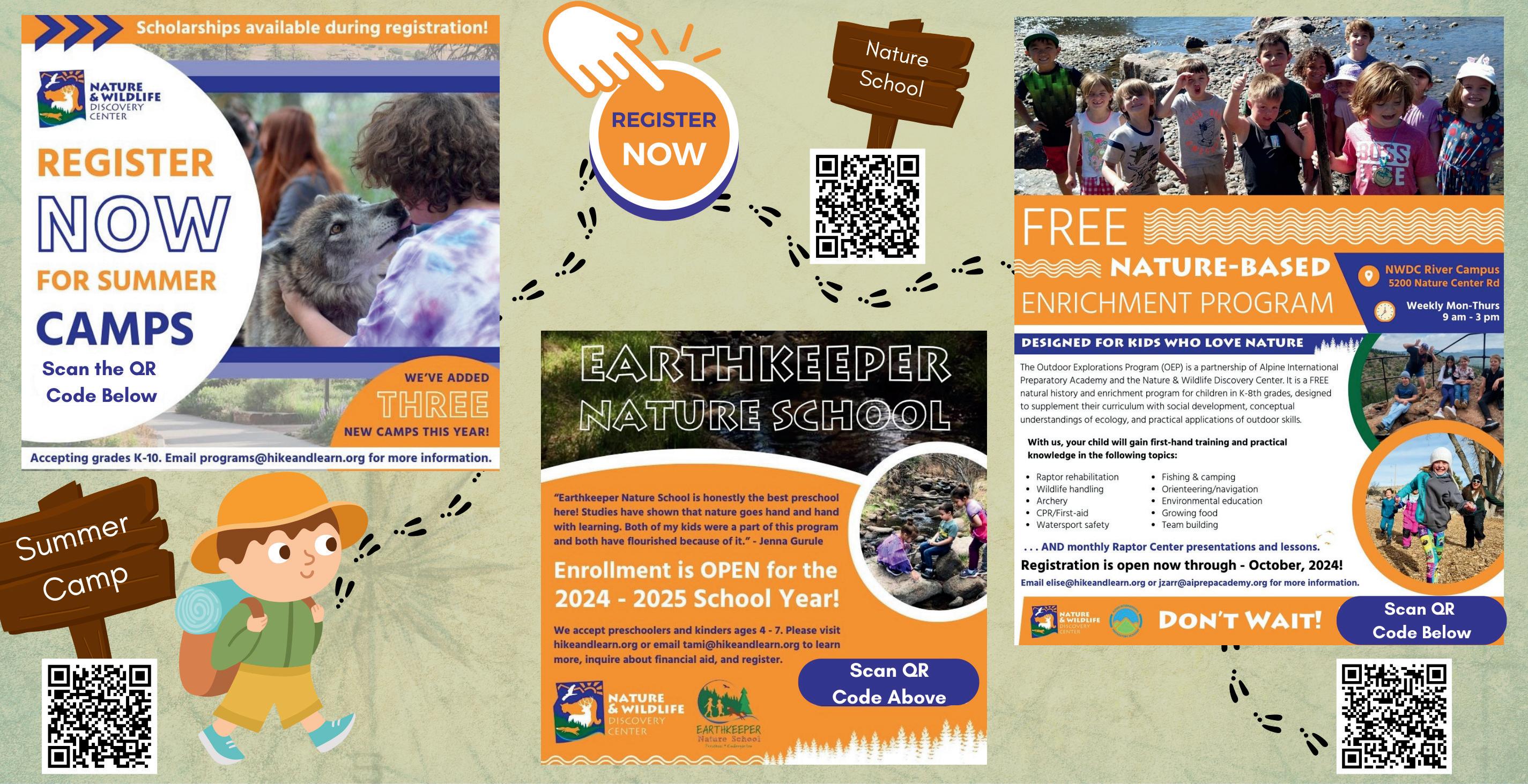
Little Paws Matter Benefit Feat. Rebel Kitty
7-11 p.m., Walter Brewing Company, 126 S. Oneida St.
Info: RebelKittyBand@gmail.com or www.facebook.com/RebelKittyBand
Prima’s Guide to Funerals
7-9 p.m. Sept. 3, Sangre de Cristo Arts Center, 210 N. Santa Fe Ave.
Info: $30 nonmembers, $25 members
Willow’s Annual Autumn Equinox/Summer’s End Craft Fair
10:30 a.m.-3:30 p.m. Sept. 7, Pueblo Community College courtyard, 900 W. Orman Ave.
Free outdoor concert and ice cream social
5:15-7 p.m., Rosemount Museum, 419 W. 14th St.
Info: rosemount.org
Senior Week at Pueblo Zoo
Free admission for seniors Sept. 8-14, Senior Safari special activities Sept. 11
Pueblo Zoo, 3455 Nuckolls Ave.
Info: pueblozoo.org
30th annual Pueblo Chile & Frijoles Festival
Sept. 20-22, Downtown Pueblo, Union Ave.
Info: pueblochilefestival.com
Pueblo Chile Balloon Fest Launch
6:45 a.m. Sept. 20-22, Langoni Sports Complex, 1600 W. 24th St.
Rebel Kitty live alternative cover band after Chile Fest
9-11 p.m. Sept. 21, Gold Dust Saloon, 217 S. Union Ave.
Tracy Lawrence
7 p.m. Sept. 26, Memorial Hall, 1 City Hall Place
Info: pueblomemorialhall.com
October
Faux-First Friday Art, Food, and Drink Crawl
4-8 p.m. Oct. 4, Pueblo Welcome Center and Riverwalk, 310 Central Main St.
Sixth annual Multicultural Festival
Oct. 5, Mineral Palace Park, 1600 N. Santa Fe Ave.
Rend Collective: The Feel-Good Folk Show
7 p.m. Oct. 6, Pueblo Memorial Hall, 1 City Hall Place
Info: pueblomemorialhall.com
Willow’s All Hallow’s Eve Psychic Fair
10 a.m.-3:30 p.m. Oct. 12, Pueblo Community College (lower level), 900 W. Orman Ave.

Spellbound Samhain 2024
10 a.m.-6 p.m. Oct. 26, Karmic Konnection, 125 E. Abriendo Ave.
Info: karmickonnection.com
All submissions must be a specific event with a start time and date. We do not include regular business listings. If you have a question about whether or not your listing qualifies, just ask. We’re glad to help.
Please do not submit the same event more than once. Check first to see if it's already posted, or ask us. If someone beat you to it and there are issues you'd like to correct, let us know.
Event listings are free. We will also offer paid display advertising in print and online that may suit your events better. If you have specific needs, let us know how we can work with you.
All events are screened before they appear online and in print. We reserve the right to refuse to publish any event, for any reason.








UPCOMING
Episode No 25 The Making of Pueblo PopUp
Episode No 24 Steel City Music Showcase
Episode No 23 Trees Please
LISTEN NOW
Episode No 19
Elishevah Sepulveda & Seppy’s




NOW
Episode No 12 Robert Hall
Episode No 10 Aspen Pounds

Episodes No 18-20-21-22
Special Limited Edition - 4 Episodes La Pura Verdad - Angelika Palacios
NOW



Hosts: Ben Cason & Brandon Samora
Do you love sports? Interested in sharing local stories about athletes, teams and competitions with the Pueblo community? We are looking for passionate storytellers to report on sports for our print, podcast and broadcast platforms? ORIGINAL EDITION
Email: sports@pueblostarjournal.org



